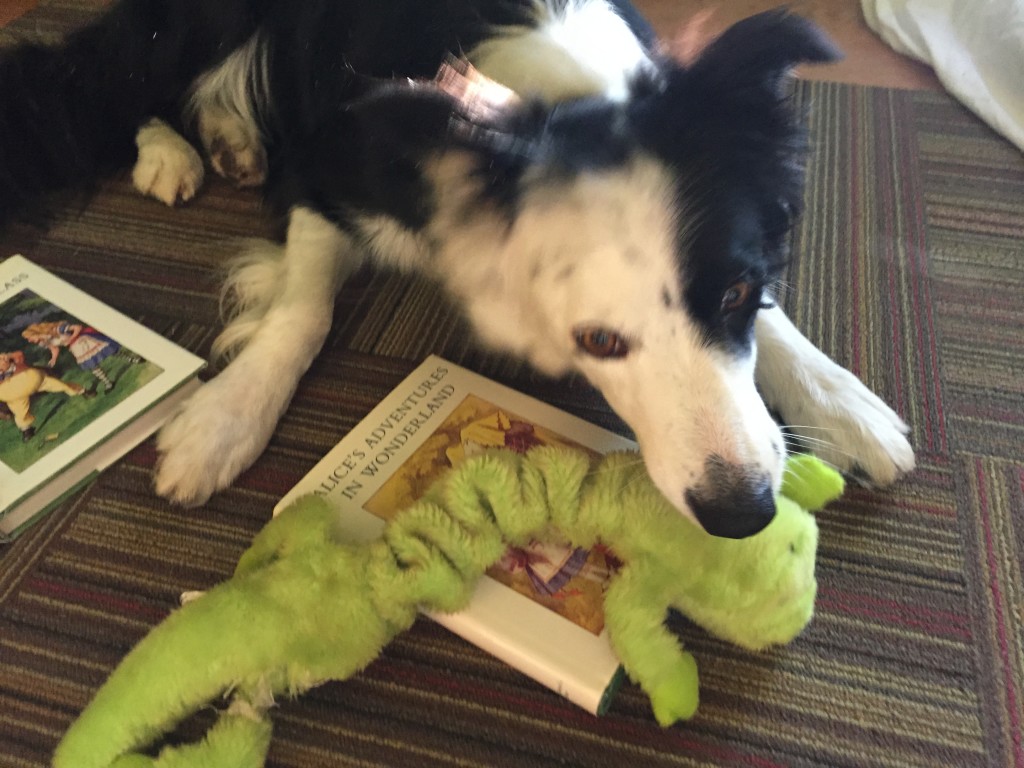Versions of Alice – Guest Post by DeAnna Knippling
I met DeAnna at a writing workshop on the Oregon Coast a few years ago. We read each other’s short stories for one assignment, and hers was so well done I got all the way to the end before I remembered what I was supposed to be doing and had to start over.
DeAnna recently published Alice’s Adventures in Underland: The Queen of Stilled Hearts, a delightful retelling of Alice’s Adventures in Wonderland in which Charles Dodgson (Lewis Carroll) is a zombie. DeAnna’s love for the classic tale comes through in her story … as does her love of zombies!
DeAnna’s guest post is about different film versions of Alice. I had no idea there were so many, and am looking forward to watching a few. I’m very happy to have DeAnna as my first guest!
You can find out more about DeAnna at Wonderland Press.
Versions of Alice
The best film version of Alice in Wonderland is not up for argument, and it isn’t Tim Burton’s version.
Johnny Depp may be a handsome, slightly-mad devil, and I really have no issues with the non-canonical plot, but it’s a story for a well-mannered young woman who isn’t sure she wants to be married, not a perfectly bratty little girl who hasn’t the slightest desire to do what she’s told. Alice of Oxford and Wonderland has more in common with Sarah in Labyrinth than she does with the knightly Alice of Tim Burton’s vision.
Walt Disney’s cartoon is charming and iconographic and has more famous comedic actors than you can shake a stick at—but was made in 1951, so most of us don’t remember the actors we’re laughing at, and most of the actors sound perfectly polished and rehearsed.
The 1985 version has the same problems—comic actors, stiff performances, and a main character who looks as though she wanders over to the director after every shot in order to be praised. Even though Carol Channing sings an excellent version of “Jam Tomorrow Jam Yesterday” that spans octaves and does the shimmy shake, I can’t get past the way Alice woodenly raises her arms and throws herself down the rabbit hole, screaming.
The 1933 version tries to be an early The Wizard of Oz, but lacks magic—even if it does have W.C. Fields.
The 1915 silent movie version has a good-girl Alice, poor puppetry, few special effects, and an eerie lack of sound.
There’s a porno version from the 1970s, a trippy black and white version from the 1960s with a soundtrack by Ravi Shankar, a short version from the 1980s that uses sexual symbolism, contemporary remakes, surreal remakes, ballet remakes, remakes in Paris, remakes that run through dives in the North East of England. A version with Peter Sellers; a version starring Kate Beckinsale.
Everyone seems to have their own stamp to put on the story, as though it were something to be stamped upon, rather than told.
No, the best version is Nick Willing’s Alice in Wonderland from 1999, part of a Hallmark Entertainment miniseries that showed on NBC.
Hallmark Entertainment productions included excellent versions of Arabian Nights, Don Quixote, Animal Farm (who else would have made a family-friendly version of George Orwell?), and more. They even produced the Farscape series. Jim Henson’s Creature Shop did the special effects, and laid down some of the tricks that were later used in the Tim Burton version (the enormous head on the Mad Hatter, for example, which became the Red Queen’s enormous head in the Burton version).
The director, Nick Willing, came from Photographing Fairies, an elegant movie about faith and magic, and went on to direct Jason and the Argonauts, Tin Man (based on the Oz books), another Alice version, Alice, in 2009, featuring another grown-up Alice, a version of Peter Pan, a version of the Odyssey.
The main thing, though, is the performances.
Miranda Richardson shrieks “Off with her head!” with such force that the rest of the cast flinches visibly. Hagrid and Norm (Robbie Coltraene and George Wendt) crack up as Tweedledum and Tweedledee. Martin Short tapdances through his role as the Hatter, Ben Kingsley does a lot of drugs and keeps a stiff upper lip, and Gene Wilder coos his way through “Beautiful Soup.”
The actors are at the top of their games—as in a lot of the other versions—but it’s the fourteen-year-old actress who plays Alice, Tina Majorino, who brings them all together. She doesn’t just move woodenly through her lines the way most of the child-Alices do, but reacts so charmingly to the other actors that they can’t seem to help stretching just a little bit further to try to make her smile.
In the end, even beyond the fact that I can recognize and appreciate the actors, and that the story is a retelling rather than a stamped version of a director’s artistic version, it’s the way the actors seem to be having fun and trying to amuse an actual, responsive kid that makes the difference for me: you can see them watching Tina Majorino out of the corners of their eyes, trying to catch a glimpse of her delight.



Oh, that looks wonderful. Thank you 🙂
Thank you! That was a lovely post, and I now have a few more movies to watch. 🙂